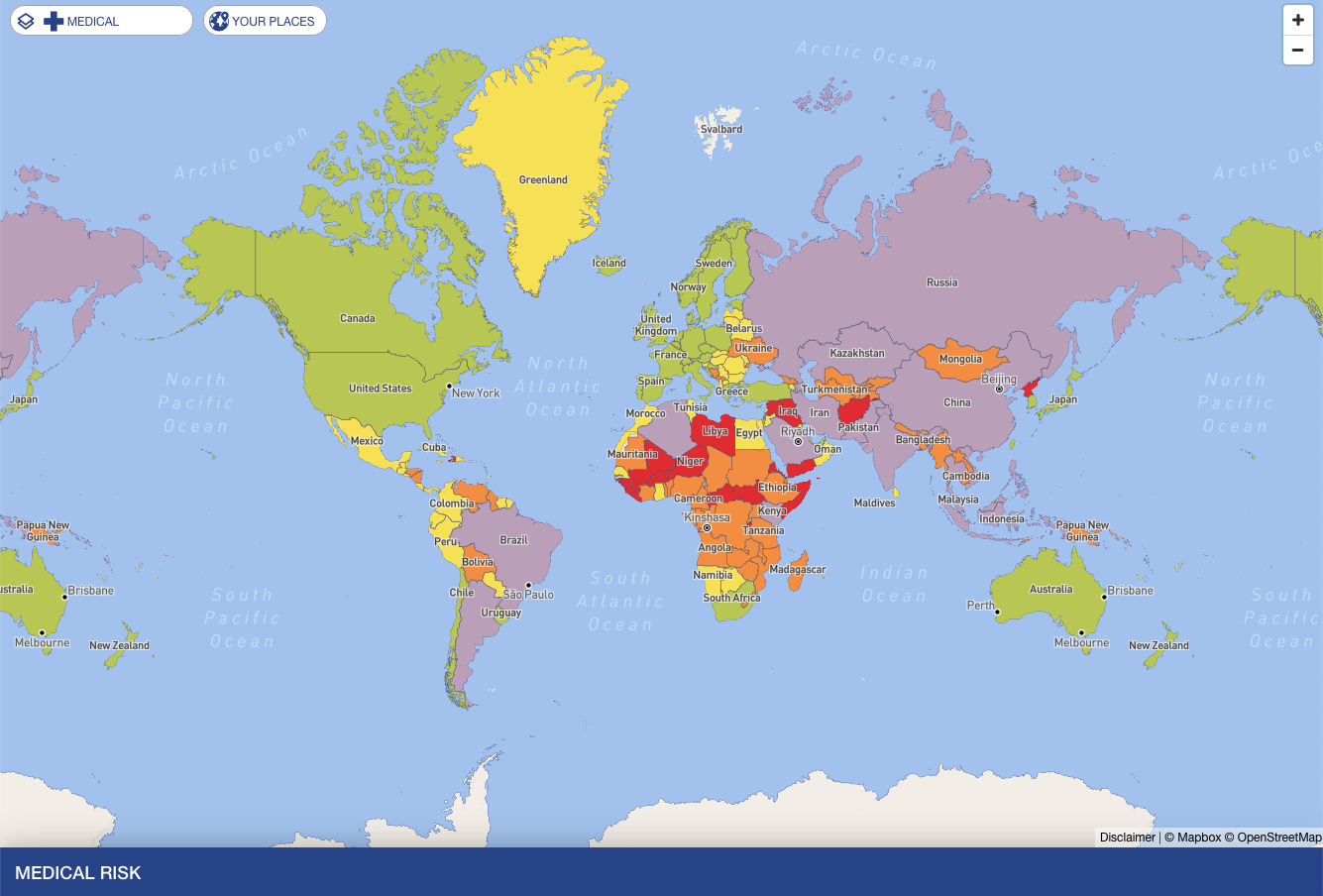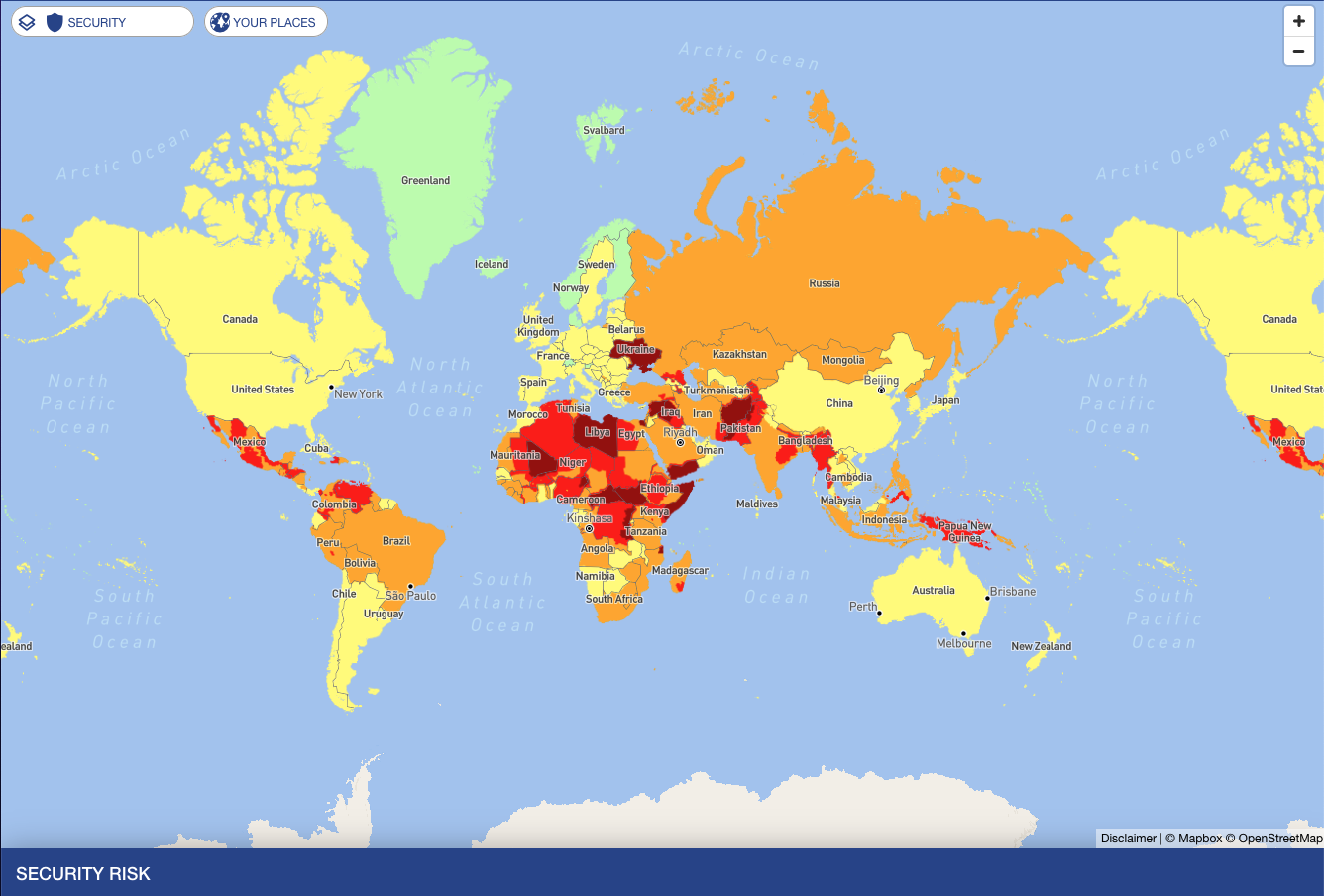When people travel, their safety is usually, if not always an utmost concern. Travel insurance companies offer policies for medical risks, while international governments watch each other for security risks. Meanwhile, the U.S. government lists travel alerts and warnings to help its citizens plan their travels based on safety risks.
International SOS is a health and security services firm. Founded in 1985 and headquartered in London and Singapore, the privately owned company takes around 4 million assistance calls every year and has close to two-thirds of the Fortune Global 500 companies as clients.
From Wikipedia:
International SOS focuses on helping organizations and their people reduce exposure to, and mitigate, health, well-being and security risks. Their services include providing a feed of information on world events, assistance services, health consultancy and programs, education, advice and medical equipment. It advises on preventive programs and assisting with emergency response for employees, including domestic workers, business travelers, expatriates and their dependents.
International SOS operates worldwide via 81 offices and 26 assistance centers serving over 1,000 locations in 90 countries.
Each year, International SOS releases a map of the world with a color coordinated map of the world’s most (and least) dangerous destinations. Assessments of threats in any location are based on a variety of factors including:
- political violence
- social unrest
- pandemic impact/infectious disease
- crime (both violent and petty)
They then label each location based on medical and security risks. Here’s what International SOS says about both for 2023:
Medical Risk
Potential risk (click here for further definitions):
- Green: Low
- Yellow: Medium
- Purple: Variable risk
- Orange: High
- Red: Very high
“The medical risk ratings are based on a range of health risks and mitigating factors, including but not limited to: infectious disease including COVID-19 impact on accessing and provisioning healthcare, environmental factors linked to climate change, security risk rating, medical evacuation data, standard of emergency medical services, outpatient and inpatient medical care, access to pharmaceutical supplies, and cultural, language or administrative barriers.
An overall single rating is given for a location; however the medical landscape can vary widely. For example, major cities may have better access to quality medical care; whereas remote or rural locations may have limited availability of health facilities and specialist care.”

“Very high” medical risks for 2023, shown in red, include Afghanistan, Burkina Faso, Central African Republic, Eritrea, Guinea, Guinea-Bissau, Iraq, Liberia, Libya, Mali, Niger, North Korea, Sierra Leone, Somalia, South Sudan, Syria and Yemen.
Click here for International SOS’s interactive version of the map above.
Security Risk
Potential risk (click here for further definitions):
- Green: Insignificant
- Yellow: Low
- Orange: Medium
- Red: High
- Maroon: Extreme
“The security risk rating evaluates the threat posed to employees by political violence (including terrorism, insurgency, politically motivated unrest and war), social unrest (including sectarian, communal and ethnic violence) as well as violent and petty crime. Other factors, such as the robustness of the transport infrastructure, the state of industrial relations, the effectiveness of the security and emergency services and the country’s susceptibility to natural disasters are also considered where they are of sufficient magnitude to impact the overall risk environment for employees.”

“Extreme” security risks for 2023, shown in maroon, include all or part of Afghanistan, Central African Republic, Democratic Republic of the Congo, Iraq, Israel, Mali, Mozambique, Libya, Pakistan, Somalia, South Sudan, Syria, Ukraine and Yemen.
It’s also noted that only a handful of places received an “Insignificant” security risk for 2023, shown in green: Denmark, Greenland, Finland, Iceland, Norway, Slovenia and Switzerland.
Click here for International SOS’s interactive version of the map above.
Feature Image: Michael Theis / flickr / CC BY-ND 2.0
Want to comment on this post? Great! Read this first to help ensure it gets approved.
Want to sponsor a post, write something for Your Mileage May Vary, or put ads on our site? Click here for more info.
Like this post? Please share it! We have plenty more just like it and would love it if you decided to hang around and sign up to get emailed notifications of when we post.
Whether you’ve read our articles before or this is the first time you’re stopping by, we’re really glad you’re here and hope you come back to visit again!
This post first appeared on Your Mileage May Vary

2 comments
Palau has zero ophthalmologists. Liberia has 6 but I highly doubt they have all sub-specialists, like vitreoretinal surgery. Have a giant retinal tear and you are dead meat.
I”m surprised to see Israel listed as having Extreme security risk.